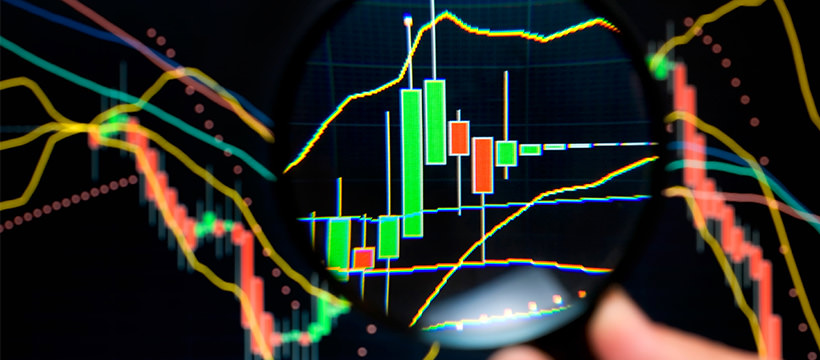Technical Analysis vs. Fundamental Analysis: Key Differences
September 11, 2018

Technical Analysis and Fundamental Analysis are two widely used practices in trading, including Forex. In fact, they are, from a certain point of view, mandatory, as they allow the elimination or at least mitigation of the random element, which in the markets risks always being dominant. In this article, we will discuss both technical analysis and fundamental analysis, trying to understand - if possible - which of the two practices deserves greater consideration.
Why Analysis in Trading
Before addressing each of the two disciplines separately, we can describe analysis in trading as a way to remove the investment activity from the random element. A way to operate, as much as possible, in a scientific manner, through an estimation not so much of prices but of the direction of prices - and the duration of trends.
Obviously, technical analysis and fundamental analysis proceed from different principles (in part) and different methodologies. This diversity has fueled a rivalry over the years, which in some circles has turned into a clash. Does this clash have a reason to exist? And if so, who should prevail? To find out, we need to analyze... The two analyses.
How Technical Analysis Works
Technical analysis is the discipline that allows estimating the direction of prices, deriving trading orientations from an objective, technical study of the market. It is based on some general rules, some definitive dogmas. The two most important ones are: history repeats itself, and prices discount everything.
"History repeats itself" means that the market goes through phases that are always the same, and even with a certain cyclicality. Everything that happens has, in a sense, already happened. This allows for the identification of patterns, behavioral models of investors and assets, which is then the basis of the entire technical analysis.
"Prices discount everything" means instead that all the "clues" to understand how and for how long prices will move are derived from studying prices, a synecdoche that stands to indicate the market in general.
The tools through which technical analysis is practiced are indicators, i.e., price behavioral models that, based on statistics, offer entry and exit signals. By studying how a given indicator, or model, interacts with the chart, it is possible to draw important information for trading purposes. The underlying idea, therefore, is that given certain basic elements, the price will always move in the same way.
How Fundamental Analysis Works
It's a whole different story when it comes to fundamental analysis, although it shares one element, a basic principle (even if it is not elevated to a dogma) with technical analysis. The principle is that "history repeats itself." Fundamental analysis is also based, in a sense, on modeling, whose rationale is determined by the conviction that the market moves cyclically, and that certain basic elements correspond to given effects.
With the big, huge difference, that here, what is analyzed is not the chart but.... Everything else. The object of fundamental analysis is the economic environment, i.e., the news that can directly or indirectly affect the assets being traded. Here, the paradigm shift is evident, moving in the opposite direction to "prices discount everything." On the contrary, the basic principle is that assets are heavily influenced by what happens externally, and that studying the chart alone is not sufficient at all.
This translates into the forecasting and study of what are commonly called market movers, i.e., events capable of influencing prices. These events can have a precise cadence (e.g., the publication of macroeconomic data, central bank meetings) or can be extemporaneous, such as policy maker statements.
Is Technical Analysis or Fundamental Analysis Better?
The question is raised mainly by proponents of technical analysis. From this point of view, what makes it difficult to reconcile opinions is precisely the dogma of "prices discount everything." It is obvious that this premise attributes to technical analysis a character of self-sufficiency, emptying, at least theoretically, fundamental analysis of its usefulness.
In the end, however, both are necessary, and both have the same degree of dignity. That prices discount everything is, at most, a partial truth, also because some dynamics, very simply, do not depend on what happens in the market, on exchanges, etc. Some movements can only be explained by an external, endogenous influence. And then, a good part of market movers always move a few pips (if it weren't so, they would be called something else).
Therefore, a rational approach to trading cannot ignore technical analysis as well as fundamental analysis, which in this perspective should be understood as two complementary disciplines. Of course, it is more tiring to practice both, but that's the way it is.
One can argue about which of the two is easier to practice. At a superficial glance, technical analysis is more difficult. After all, its practice requires the trader to work with numbers, and moreover to know, at least at a partial level, statistics. Even visually, technical analysis is complicated, since - in the middle - there are certainly not immediately understandable chart elements.
In reality, fundamental analysis is more difficult. If technical analysis is dominated by clear rules, always the same; fundamental analysis is more... Unpredictable. Those who practice technical analysis must learn to read indicators; those who practice fundamental analysis must learn to interpret the existing. Interpreting, obviously, is more difficult than reading.
To master technical analysis, therefore, commitment and a certain amount of intelligence are necessary. To master fundamental analysis, on the other hand, commitment, experience, and a great deal of intelligence, even intuition, are necessary.




